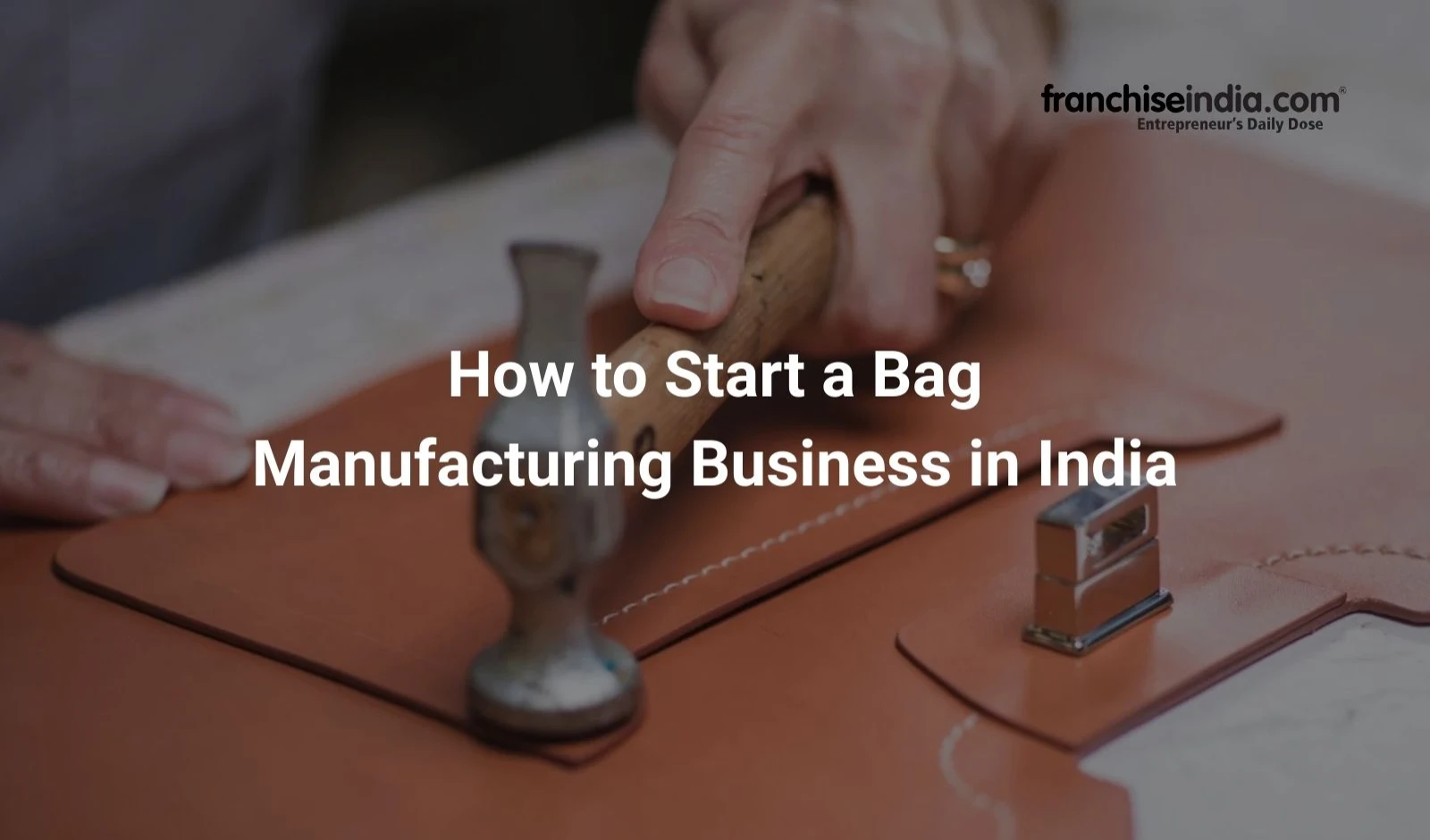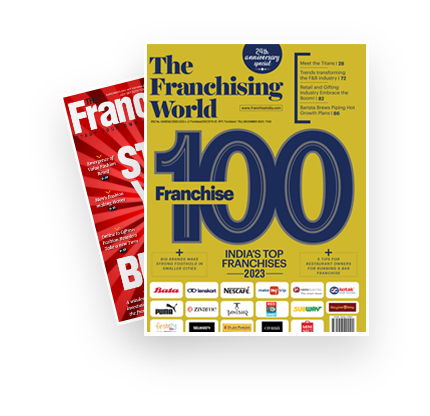
Bags are everywhere in daily life—reusable shopping bags, sturdy backpacks, canvas totes, or stylish handbags. That constant demand makes bag manufacturing a solid business idea in India. It’s especially popular with small and mid-size businesses because you don’t need a fortune to start, you’ve got lots of product options, and there’s plenty of space to build your own brand.
You can sell to retail stores, wholesale buyers, corporate gifting clients, or even jump into e-commerce. There’s no shortage of possibilities, and the market just keeps growing. If you’ve got a handful of industrial sewing machines (say, five to ten), a clear plan, and a team that knows what they’re doing, you can get production up and running pretty quickly. The main steps? Pick the type of bags you want to make, get the right machines, source your materials, handle the paperwork, and set up simple systems for production and quality. Nail your costs, figure out your marketing, and think long-term. That’s how a bag manufacturing business grows into something profitable and steady.
In this article we are going to discuss the process of how we can start a bag manufacturing business, including the investment, location, formalities, and challenges.
Also read: 11 Scrap Businesses You Can Start in 2026
Steps for Starting a Bag Manufacturing Business
1) Why now? Market snapshot
.jpg)
The bags and handbags market in India is booming. More people want bags—thanks to rising incomes, changing styles, and a shift toward practical, eco-friendly products. The industry’s already worth hundreds of millions of dollars (we’re talking several billion rupees), and it’s set to grow for years. Reports show people are moving toward branded and functional bags. There’s huge potential in retail, corporate, and export markets, so if you’re looking for a business with staying power, this one checks a lot of boxes.
2) Decide your product niche
When you’re starting out, you’re better off picking one kind of bag and focusing on that. Maybe you want to make reusable shopping bags for supermarkets and companies or canvas totes for lifestyle stores. School bags and backpacks need extra padding, while handbags and clutches can bring in higher margins. You could even look at industrial woven PP bags for packaging. Your choice affects everything—raw materials, machines, the skills your workers need, and which certifications you’ll have to get. For certain products, like kids’ backpacks, safety and quality rules are stricter, so you’ll need to keep that in mind.
3) Formalities & compliance
.jpg)
Before starting a bag manufacturing business in India, it's important to complete the necessary legal registrations. Choose your business structure—proprietorship, partnership, or private limited company—depending on your budget and where you see the business going.
- Getting Udyam (MSME) registration is a smart move, since it brings perks like subsidies, easier loans, and better access to government contracts.
- You’ll need GST registration if your turnover crosses the limit or you want to claim input tax credit. GST rates for bags usually run from 5% to 18%, depending on the material and HSN code.
- You might also need a Shops & Establishment certificate or a Factory License, depending on your setup.
Don’t forget about labor laws—like EPF, ESI, and minimum wage rules—if they apply. Getting your paperwork right early on saves you trouble (and fines) down the line.
4) Location, space & utilities
A small manufacturing unit needs about 600 to 1,200 square feet—enough for your machines, storage, a bit of office space, and somewhere for workers to take a break. It’s best to set up in an industrial area or a light manufacturing zone, where you’ve got easy access to suppliers and transport. Rent varies—a unit in a tier-2 city might cost ₹20,000 to ₹50,000 a month, while metro areas will be pricier. Picking a good location helps you run things smoothly and keeps logistics costs under control.
5) Machinery & equipment (basic list for a small unit)
.jpg)
A small fabric, canvas, or non-woven bag manufacturing setup generally requires basic machinery and tools. This includes 4–8 industrial single-needle sewing machines, one or two overlock/serger machines for finishing, and a zipper or button machine if your product requires it. You’ll also need a cutting table, basic tools like scissors or die cutters, and if you want to add branding, a heat press isn’t a bad idea.
Set up some workstations, grab a small air compressor if you’re using pneumatic tools, and you’re good to go. Industrial sewing machines usually cost between ₹9,500 and ₹62,000, but most reliable models fall in the ₹15,000 to ₹25,000 range.
Also read: How to Start a Spice Business in India
6) Raw materials & suppliers
Your raw materials depend on what kind of bags you’re making. Most use non-woven fabric, canvas, cotton, jute, PP woven material, or synthetic and leather alternatives for premium bags. Prices change based on quality, thickness, and supplier, and you’ll usually get quotes by the meter or kilogram.
Additional essentials include interlining, foam for padding, lining fabric, zippers, sliders, handles, metal accessories, thread, adhesives, and packaging materials like poly bags and boxes. It’s smart to work with multiple local suppliers and keep at least a 20–30-day material stock to avoid production delays.
7) Production process (simple flow)
The production process begins with creating designs and patterns, either manually on paper or digitally using CAD. Once you’ve nailed down the patterns, you mark and cut the materials—maybe by hand, maybe with die-cutting if you’re working in bulk. After that, it’s time to stitch things together, finish the edges, add in zippers or linings, and attach any hardware or accessories. Assembly done, you trim off the loose threads and check for any mistakes—stitching, size, hardware, all of it needs to be right. Only then do you iron, pack, and get the bags ready to ship. When you use standard patterns and clear processes, you waste less material, and everything runs smoother.
8) Labor—team & wages
.jpg)
A small manufacturing unit typically requires a basic workforce structure. Usually, you’ll have a supervisor or someone in charge of quality, four to eight people running sewing machines, a cutting assistant, and someone to handle admin and packaging.
Salaries can vary a lot depending on where you are and your team’s skill level, but skilled workers often earn ₹20,000 to ₹30,000 a month. You’ve got to check your local minimum wage rules and labor laws before setting pay. A trained, balanced team keeps production steady and quality up.
9) Production capacity & simple revenue illustration
A realistic early-stage production estimate can help you plan finances better. One machine usually turns out about 20 finished bags a day, depending on how complicated the design is. With five machines going, you’re looking at around 100 bags a day. If you run 25 days a month, that’s about 2,500 bags. Selling each one at ₹150, your monthly revenue hits ₹3,75,000. After raw materials and labor, a 40% gross margin is pretty common, so you’re left with roughly ₹1,50,000 in gross profit per month.
Of course, these are just ballpark figures—real results will depend on what you’re making, how fast your team works, how many orders you get, and your pricing. Keep adjusting as you learn what works for you.
10) Distribution & sales channels
.jpg)
There are multiple sales channels for a bag manufacturing business, and choosing the right mix can help balance cash flow and growth. B2B clients—corporates, supermarkets, hotels, NGOs, schools—often bring in big, repeat orders. If you’re making non-woven or utility bags, selling to local wholesalers or kirana stores keeps things moving. Building your own brand is another path: try marketplaces like Amazon or Flipkart, social media like Instagram, or set up your own online shop.
Trade fairs and exhibitions help you show off your samples and meet buyers face-to-face. Once your quality and production are solid, you can look at exports, but you’ll need an IEC code and export council registration for the benefits. Early on, it’s smart to balance things—go after bulk B2B orders for steady cash, but don’t ignore retail if you want to build your brand and get better margins.
Also read: 11 Small Business Ideas in Punjab
11) Quality, packaging & branding
Maintaining strong quality control is essential for building trust and repeat business. Use simple QC checklists for things like size, stitching, hardware, and finishing. Make your products look good: clear photos, neat packaging, proper tags. If you’re in the eco-friendly space, certifications or verified claims go a long way with environmentally conscious buyers. Consistency in quality, branding, and presentation helps you stand out, whether you’re selling in bulk or retail.
12) Funding options & government support
.jpg)
Banks offer multiple MSME loan options, including term loans for setup and working capital loans for day-to-day operations. Getting your Udyam registration helps with eligibility and can get you better rates. Besides banks, government programs can give you a leg up. Check out credit guarantee schemes (they cut down on collateral needs) and subsidies for tech upgrades or modernization. Look into what the Ministry of MSME and your state’s MSME department offer—there’s a lot of support out there for small businesses if you know where to look.
Common challenges & mitigation
To ensure consistency, create clear standard operating procedures and train staff regularly for quality control. Since the market includes many low-priced unbranded products, focus on dependable supply, strong service, and differentiated quality to stay competitive.
- Raw material prices can fluctuate, so keep a buffer stock and maintain relationships with multiple suppliers.
- Labour stability is also important—offer skill development, steady pay, and performance-based incentives to reduce turnover and build a skilled, reliable team.
Final notes
Before you hit the market, develop five to ten solid prototypes that really show off your bag’s design, strength, and finish. Don’t go overboard with the product range at first—stick to a handful of SKUs to keep inventory and costs under control, and use this phase to fine-tune your production. See if you can work out short-term credit with your suppliers—even 15–30 days helps with cash flow and makes managing daily expenses a bit easier.
Monitor key performance indicators (KPIs) such as daily output per machine, material usage per bag, reject rates, and average order value to identify inefficiencies and improve productivity. Finally, prioritize building relationships with repeat B2B customers, as regular bulk orders help stabilize revenue, lower marketing expenses, and provide predictable cash flow. Combining these strategies ensures a controlled, efficient, and scalable start while gradually expanding production and sales based on real demand and market response.
You might also like: Why start a Momo Business this Winter?

